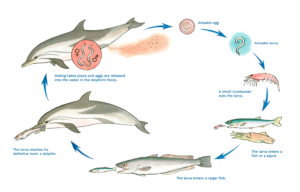When people hear the term “dolphin fish,” they often conjure images of playful marine mammals. However, the dolphin fish, more accurately known as mahi-mahi, is a vibrant, colorful fish that inhabits warm ocean waters around the globe. This article will explore the world of dolphin fish, discussing its characteristics, habitats, behavior, culinary uses, and its relation to other species in the same family.
What is Dolphin Fish?
Dolphin fish, scientifically known as Coryphaena hippurus, is a robust fish characterized by its striking coloration, featuring bright greens, blues, and yellows. The fish has a distinctive elongated body, very short dorsal fin, and a unique head that flattens out toward the forehead. While it is commonly referred to as dolphin fish, it is important to note that the term does not relate to the aquatic mammals known as dolphins.
Mahi-mahi is typically found in tropical and subtropical waters and is highly appreciated by anglers and chefs alike for its delectable taste and firm, flaky texture.
Habitat and Distribution

Dolphin fish primarily inhabit warm oceanic waters, often found in offshore areas near floating debris such as seaweed, logs, or man-made objects. They prefer the upper layer of the ocean, typically within the first 50 meters (164 feet), where they can hunt their primary prey, including small fish, squid, and crustaceans. Dolphin fish are frequently found in the Atlantic, Pacific, and Indian Oceans, and their range extends from the eastern United States down to South America, across the Caribbean, and throughout the Pacific islands.
Life Cycle and Behavior

Dolphin fish possess a fascinating life cycle. They are known for their rapid growth, reaching maturity within a year. Females tend to live longer than males, with a lifespan of around four years, while males may live for two to three years. Dolphin fish are prolific spawners, capable of producing hundreds of thousands of eggs in a single spawn.
In terms of behavior, mahi-mahi are known for their aggressive feeding habits. They are opportunistic hunters, preying on anything that swims nearby. Dolphin fish are also social creatures, often found in schools, although solitary individuals can sometimes be encountered. These fish are known for their spectacular leaps out of the water, which not only demonstrates their power and agility but also aids them in evading predators such as larger fish, birds, and sharks.
Culinary Uses of Dolphin Fish
Dolphin fish is a favorite in many cuisines around the world. Thanks to its moist, flaky texture and mildly sweet flavor, mahi-mahi is versatile and adaptable to various cooking methods, including grilling, broiling, baking, and frying. It can be enjoyed in a host of dishes, from tacos to salads and even as sashimi.
Nutritional Benefits
Mahi-mahi is not only delicious but also packed with beneficial nutrients. A typical serving of dolphin fish offers high-quality protein, omega-3 fatty acids, and essential vitamins and minerals, including B vitamins and selenium. With low levels of mercury compared to other fish species, dolphin fish makes a safer choice for regular consumption.
Best Cooking Techniques
One of the most popular methods for preparing dolphin fish is grilling. Due to its firm texture, mahi-mahi holds up well on the grill and can be marinated to enhance flavor. A simple marinade of lime juice, garlic, and chili powder complements the natural flavor of the fish beautifully. Dolphin fish can also be baked or pan-seared, with various sauces like mango salsa or garlic butter elevating the dish’s appeal.
Relatives of the Dolphin Fish
Dolphin fish belong to the family Coryphaenidae, which includes two main species: the common dolphin fish (Coryphaena hippurus) and the pompano dolphin (Coryphaena equiselis). While both species share similar characteristics, there are distinctive differences between them.
- Common Dolphin Fish (Coryphaena hippurus) – This is the more popular of the two and is what most people refer to when they mention dolphin fish. It has a more elongated body and a bright, iridescent coloration. The common dolphin fish can grow up to 87 inches (2.2 meters) long.
- Pompano Dolphin (Coryphaena equiselis) – This species is smaller and has a more rounded body shape. Pompano dolphins typically grow up to 39 inches (1 meter) in length and are often found in similar habitats to their larger cousins. Unlike the vibrant colors of mahi-mahi, pompano dolphin fish have a more subdued coloration, usually featuring silver and light green hues.
Unique Features of Dolphin Fish

One of the most fascinating aspects of dolphin fish is the remarkable color change they undergo after being caught. The vivid hues of their skin can turn pale and dull shortly after death, which is attributed to their skin’s iridophores—special cells that reflect light and contribute to their vibrant colors. This unique ability to change colors is thought to play a role in their social interactions and camouflage in their natural habitats.
Conservation Status and Sustainability
As with many marine species, concerns about overfishing and habitat degradation have led to a more cautious approach toward mahi-mahi fishing. While the species is currently not considered endangered, sustainable fishing practices are encouraged to ensure that dolphin fish populations remain healthy and robust. Anglers are advised to follow local regulations regarding size limits and seasonal restrictions.
Many organizations promote responsible fishing methods, including catch-and-release practices and the use of environmentally friendly gear. Consumers are also encouraged to seek out mahi-mahi from sustainable sources and certified fisheries to help protect the delicate balance of marine ecosystems.
FAQs About Dolphin Fish
1. Is dolphin fish safe to eat?
Yes, dolphin fish is considered safe to eat and is enjoyed in many cuisines around the world. It has lower levels of mercury compared to some other larger fish species, making it a healthier choice for frequent consumption.
2. How can I identify dolphin fish?
Dolphin fish are characterized by their bright green, blue, and yellow coloration, elongated bodies, and distinctive flat head. They are also known for their remarkable ability to leap out of the water.
3. What is the best way to cook dolphin fish?
Dolphin fish can be grilled, baked, broiled, or fried. Grilling is a popular method that enhances its natural flavors, especially when marinated. It pairs well with a variety of sauces and condiments.
4. Are dolphin fish and mahi-mahi the same?
Yes, mahi-mahi is the more commonly used name for dolphin fish (Coryphaena hippurus). The term “dolphin fish” can sometimes confuse people, as it does not refer to the marine mammals known as dolphins.
5. What are the differences between common dolphin fish and pompano dolphin?
Common dolphin fish (Coryphaena hippurus) are larger, with bright iridescent colors, while pompano dolphin (Coryphaena equiselis) is smaller, with a more rounded body and more muted coloration.
Conclusion
Dolphin fish, or mahi-mahi, is a captivating species known for its vibrant colors, unique behaviors, and culinary versatility. Understanding its habitat, life cycle, and sustainability issues is essential not only for enthusiasts but also for consumers who wish to enjoy this delicious fish responsibly. By promoting sustainable practices and appreciating the beauty of dolphin fish, we can contribute to the health of our oceans and the continued enjoyment of this remarkable species for generations to come.

